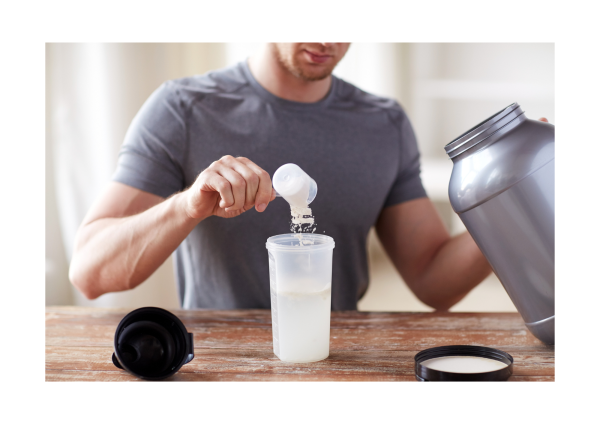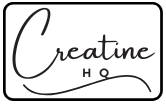
Creatine is one of the most well-researched and effective supplements for enhancing muscle mass, strength, and performance—especially relevant for men over 50 looking to preserve and grow lean muscle. To reap these benefits, however, it’s essential to understand how to take creatine properly for maximum muscle gain.
Why Creatine Matters More as You Age
Creatine becomes increasingly beneficial for men as they age due to natural declines in muscle mass and strength. Age-related muscle loss, or sarcopenia, can begin as early as your 30s and accelerate after 50. This not only reduces physical performance but also increases risk of falls, injuries, and metabolic issues. Creatine supplementation counters these effects by enhancing phosphocreatine stores in muscles, fueling high-intensity exercise and stimulating muscle protein synthesis.
Research shows that creatine supplementation can significantly increase fat-free mass and improve strength when combined with resistance training in older adults (Chilibeck et al., 2017). In fact, creatine has been identified as one of the most effective nutritional strategies to combat sarcopenia and frailty.
A meta-analysis found that older adults supplementing with creatine experienced greater gains in lean muscle mass and improved performance in functional tasks like stair climbing and sit-to-stand tests (Devries & Phillips, 2014).
Understanding the physiological changes of aging highlights why correct creatine usage is crucial for maximizing results. For further background on creatine’s benefits for men over 50, see our article on Why Men Over 50 Should Take Creatine.
The Optimal Creatine Type: Stick with Creatine Monohydrate
Creatine monohydrate is the gold standard for muscle-building supplementation. Despite the flood of “new and improved” creatine products, creatine monohydrate remains the most tested, affordable, and effective form for muscle gain.
Numerous studies confirm its efficacy, bioavailability, and safety, even with long-term use. Alternative forms like creatine ethyl ester or buffered creatine have not demonstrated superior results—and are often more expensive (Cooper et al., 2012).
One trial comparing creatine monohydrate to ethyl ester found that monohydrate led to significantly greater increases in muscle creatine content and strength gains (Spillane et al., 2009).
For a breakdown of different types of creatine and how they compare, check out Which Type of Creatine Is Best for Men Over 50?.
Loading vs. Maintenance: Two Key Phases
Creatine supplementation has two primary phases: loading and maintenance. A loading phase saturates your muscle stores quickly, while the maintenance phase sustains those levels. This approach ensures faster results and ongoing performance benefits.

The standard loading protocol involves taking 20 grams per day (split into 4 doses of 5g) for 5–7 days. After that, a maintenance dose of 3–5 grams per day keeps muscle creatine levels elevated. Some men prefer to skip loading and take 5 grams daily from the start—results come slower but are ultimately the same.
A study by Hultman et al. (1996) demonstrated that muscle creatine levels increased by 20% with a loading protocol and remained elevated for up to 30 days with continued low-dose maintenance.
Read our full guide on How Much Creatine Should a Man Over 50 Take? for deeper dosage insights.
Timing Creatine for Maximum Muscle Gain
When you take creatine can affect how much benefit you get from it. While creatine accumulates over time, studies suggest that timing doses around resistance training sessions may enhance muscle gain and strength more effectively.
Post-workout creatine ingestion appears particularly beneficial because of improved insulin sensitivity and increased blood flow to muscles. These factors enhance creatine transport into muscle tissue. Taking creatine with carbohydrates or protein post-workout further boosts absorption due to insulin’s role in creatine uptake.
A 2013 study by Candow et al. found that older men who consumed creatine immediately after workouts gained more lean body mass and strength than those who took it before training.
Learn more about When to Take Creatine for Best Results.
Combining Creatine with Resistance Training
Creatine alone offers benefits, but pairing it with strength training maximizes muscle growth. Creatine increases your ability to perform high-intensity resistance exercises by rapidly replenishing ATP, your muscles’ energy currency. Over time, this translates to more total training volume, which drives muscle hypertrophy.
For older adults, combining creatine with progressive overload training has been shown to significantly enhance lean mass, upper- and lower-body strength, and even bone density (Chilibeck et al., 2015).
In a 12-week trial, men over 50 supplementing with creatine while resistance training experienced 1.4–2.0 kg gains in lean mass compared to placebo groups, alongside significant increases in bench press and leg press performance (Gualano et al., 2014).
To build an effective strength plan that pairs well with creatine, read The Best Workouts to Combine with Creatine After 50.
Safety and Hydration: Avoiding Common Mistakes
Creatine is safe when used properly, but hydration and dosage awareness are critical. Despite persistent myths, creatine does not damage the kidneys in healthy individuals. However, improper use (e.g., mega-dosing or poor hydration) can cause discomfort like bloating or muscle cramping.
Because creatine pulls water into muscle cells, it’s essential to drink sufficient fluids. Men over 50 should aim for at least 2.5–3 liters of water daily when supplementing. Creatine is best taken consistently—even on rest days—to maintain elevated muscle levels.
A comprehensive review concluded that creatine supplementation does not adversely affect kidney or liver function in healthy adults, even with long-term use (Poortmans & Francaux, 2000).
See our article on Is Creatine Safe for Men Over 50? for a detailed look at side effects and safety considerations.
Conclusion: Getting the Most Out of Creatine After 50
To maximize muscle gain with creatine, men over 50 should focus on form, timing, consistency, and training synergy. Creatine works best when part of a holistic approach involving proper dosage, optimal timing, resistance training, and daily hydration.

Research consistently supports creatine monohydrate as a powerful tool for combating muscle loss, improving strength, and supporting metabolic health in older adults. By using the loading and maintenance protocol, training smart, and staying hydrated, you can unlock its full muscle-building potential.
Men who integrate creatine into their lifestyle alongside resistance training typically experience noticeable gains in size, strength, and energy within 8–12 weeks.
For a full overview of creatine use in your 50s and beyond, explore more evidence-based resources at Creatine HQ.
References
- Candow, D. G., Vogt, E., Johannsmeyer, S., Forbes, S. C., & Farthing, J. P. (2013). Strategic creatine supplementation and resistance training in healthy older adults. Applied Physiology, Nutrition, and Metabolism, 38(7), 724–733. https://doi.org/10.1139/apnm-2012-0371
- Chilibeck, P. D., Kaviani, M., Candow, D. G., & Zello, G. A. (2017). Effect of creatine supplementation during resistance training on lean tissue mass and muscular strength in older adults: a meta-analysis. Open Access Journal of Sports Medicine, 8, 213–226. https://doi.org/10.2147/OAJSM.S123529
- Cooper, R., Naclerio, F., Allgrove, J., & Jimenez, A. (2012). Creatine supplementation with specific view to exercise/sports performance: an update. Journal of the International Society of Sports Nutrition, 9(1), 33. https://doi.org/10.1186/1550-2783-9-33
- Devries, M. C., & Phillips, S. M. (2014). Creatine supplementation during resistance training in older adults—a meta-analysis. Medicine & Science in Sports & Exercise, 46(6), 1194–1203. https://doi.org/10.1249/MSS.0000000000000220
- Poortmans, J. R., & Francaux, M. (2000). Adverse effects of creatine supplementation: fact or fiction?. Sports Medicine, 30(3), 155–170. https://doi.org/10.2165/00007256-200030030-00002
- Spillane, M., Schoch, R., Cooke, M., Harvey, T., Greenwood, M., Kreider, R., & Willoughby, D. S. (2009). The effects of creatine ethyl ester supplementation combined with heavy resistance training on body composition, muscle performance, and serum and muscle creatine levels. Journal of the International Society of Sports Nutrition, 6(1), 6. https://doi.org/10.1186/1550-2783-6-6

